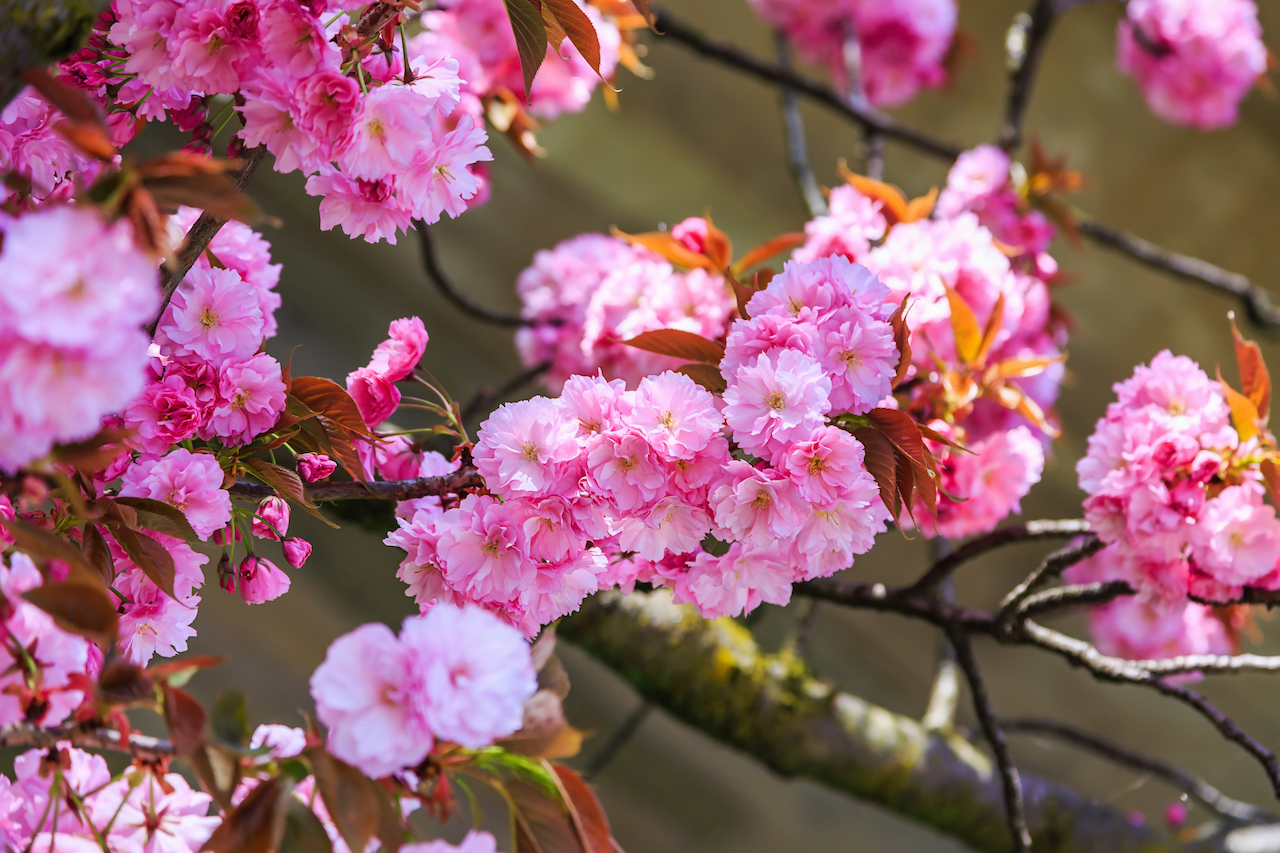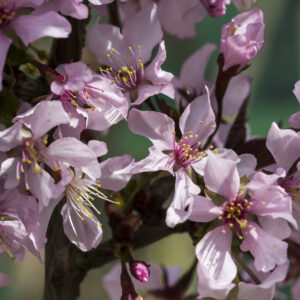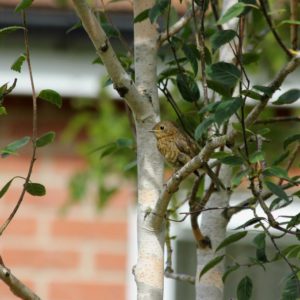Prunus Kanzan
Price range: €180.00 through €850.00
Frequently Bought Together



Description
Quick Facts
- Common Name: Kanzan Cherry, Japanese Flowering Cherry
- Botanical Name: Prunus ‘Kanzan’
- Plant Type: Deciduous tree
- Mature Height: 8-12m
- Mature Spread: 6-8m
- Flowering Period: April to May
- Flower Colour: Deep pink, double blooms
- Foliage: Bronze emerging leaves turning dark green, then orange-red in autumn
- Hardiness: RHS H6 (hardy)
- Soil Requirements: Moist, well-drained, fertile
- Aspect: Full sun to partial shade
- Maintenance: Low
Description
Discover the spectacular beauty of Prunus ‘Kanzan’, the most popular and widely planted flowering cherry in Ireland that brings unforgettable spring drama with its abundant double pink blossoms and distinctive vase-shaped form. This magnificent ornamental tree offers one of the most reliable and breathtaking spring displays, transforming streets, parks, and gardens into enchanted landscapes when its branches become completely smothered in clusters of ruffled deep pink flowers that create clouds of colour visible from afar.
In mid to late spring, this show-stopping tree produces an abundance of large, fully double flowers in rich deep pink, each bloom containing up to 30 petals that create a luxurious, peony-like appearance. The flowers emerge alongside bronze-tinted young leaves, creating a stunning colour combination that intensifies the pink tones. The distinctive upright, vase-shaped habit creates architectural presence, whilst the spreading branches become weighed down with blossoms during peak flowering, creating dramatic sweeping displays. As seasons progress, the foliage matures to glossy dark green before transforming into warm shades of orange and bronze-red in autumn.
Named after a famous mountain in Japan, ‘Kanzan’ (also known as ‘Sekiyama’) has become the quintessential flowering cherry for good reason—exceptional hardiness, vigorous growth, and utterly reliable flowering performance. Perfectly suited to Irish conditions, this robust cultivar thrives in our temperate climate, tolerating urban pollution, coastal exposure, and a wide range of soil types whilst delivering spectacular blooms year after year. The strong, upright growth makes this ideal for street planting and formal avenues.
Create stunning spring compositions by planting as specimen trees in lawns, or arrange in rows for breathtaking avenue displays that create tunnels of pink blossom. Magnificent in parkland settings, along driveways, or in mixed borders as bold focal points. Underplant with spring bulbs—daffodils, tulips, and bluebells—that bloom alongside the cherry blossoms to create layered displays of spring colour that celebrate the season’s awakening.
Caragh Garden Notebook
Planting: Space trees 6-8m apart for avenue planting, or allow 8-10m for specimen placement. Plant bare-root trees from November to March, or container-grown specimens year-round (though autumn or early spring is ideal). Dig holes twice the width of the root ball and incorporate well-rotted compost or manure. Plant at the same depth as the nursery soil mark. Stake for the first 2-3 years using a single angled stake. Water thoroughly and mulch around the base.
Soil Preparation: Thrives in moist, well-drained, fertile soil with pH 6.0-7.5. Prefers deep, moisture-retentive loam enriched with organic matter. Tolerates clay soils if drainage is adequate. Avoid waterlogged sites, very dry shallow soils, and extremely alkaline conditions. Incorporate generous amounts of well-rotted compost or manure to improve soil structure and fertility. Benefits from shelter from strong winds which can damage blossoms.
Container Growing: Not suitable for long-term container growing due to size and vigorous root system. Young specimens can be grown temporarily in very large containers (minimum 80cm diameter) using soil-based compost enriched with organic matter, but should be planted out within 2-3 years for best long-term health and spectacular flowering displays.
Seasonal Care: Requires minimal pruning—only remove dead, damaged, or crossing branches immediately after flowering in late spring or early summer. Never prune in winter or autumn as cherries are susceptible to silver leaf disease and bacterial canker through pruning wounds. Apply slow-release balanced fertiliser in early spring. Mulch annually with well-rotted compost or manure to retain moisture and improve soil fertility. Water during prolonged dry spells, especially when establishing and during bud formation.
Propagation: Propagate by grafting onto Prunus rootstock in late winter (specialist technique requiring experience). Cuttings are difficult and unreliable. Seed-grown plants will not come true to type and may take 10+ years to flower. Most gardeners prefer to purchase nursery-grown grafted specimens for guaranteed quality, true-to-type characteristics, and earlier flowering.






